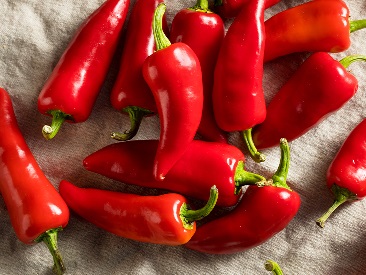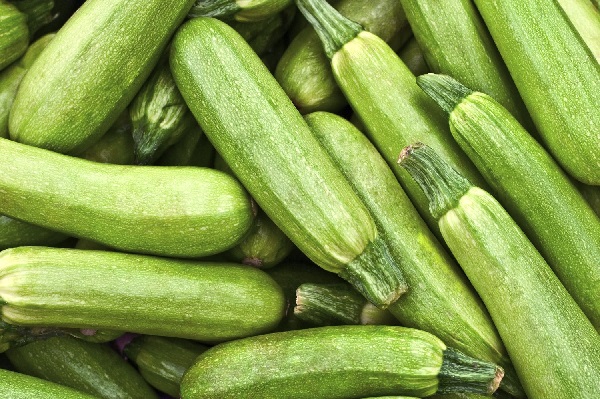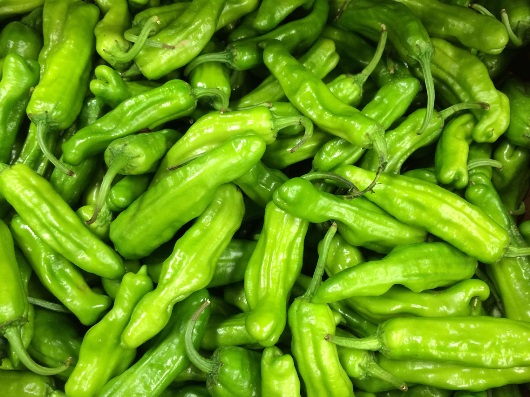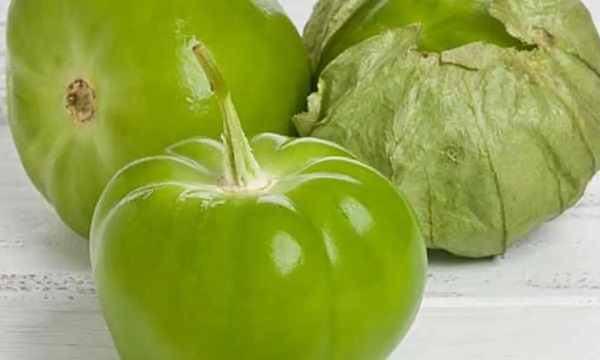Tomatillo Substitute: How To Substitute Tomatillos In Your Dish
Tomatillos are a type of fruit that is related to tomatoes. They have a unique, sour taste used in Mexican dishes, most notably tacos. Although they are not impossible to find, some people may have difficulty locating them. This article explores the different vegetables and other options that can be substituted for tomatillos to achieve a similar flavor profile. Ultimately, it is up to the individual to decide which tomatillo substitute works best for them.
Perfect Tomatillo Substitute: Wide-range alternatives
If you can’t find tomatillos, or if they’re out of season, don’t worry – there are plenty of other substitutions that will work just as well. Feel free to select what matches the taste you prefer for your recipe from the list below.
Cherry Tomatoes
Cherry tomatoes have a tartness and aroma that is similar to tomatillos. Additionally, adding lime juice can help to create a similar flavor profile.
Cherry tomatoes are an excellent substitution for tomatillos because of their concentrated flavor. They are also much smaller in size, so you will need less of them to achieve the same flavor profile.
Gooseberries
Gooseberries come in three different colors: green, golden, and red. Each type of gooseberry has its unique flavor profile.

In contrast to tomatillos, gooseberries have a mix of tart, savory, and sweet flavors that make them unique to any dish. Additionally, the texture is similar to cherry tomatoes, so it can easily be substituted in recipes that call for tomatillos.
Green Bell Peppers
Green bell peppers can be substituted with tomatillos in most recipes. This is because they have a similar flavor profile and a similarly beautiful color.
The texture is very similar, and the sourness is reduced when cooked. However, the sweetness is also removed, so you may want to add some honey or sugar if you use this substitution in a recipe.
Green Salsa
Green salsa is a popular type of salsa typically made with jalapeños, tomatillos, and other fresh ingredients. It is well-known for its fiery taste and traditional cooking methods.
If you are looking for a delicious and easy alternative to satisfy your taste buds, green salsa is the answer. Green salsa can be used as a dip or an ingredient in various dishes. Additionally, green salsa is a healthy option low in calories and high in nutrients.
Green Tomatoes
Green tomatoes are unripe tomatoes that can be used as a substitute for tomatillos in most recipes. They have a similar taste and texture, so they are a good option if you can’t find tomatillos.
Green tomatoes are a good substitute for tomatillos in recipes. They have a slightly sour taste, but it is not as strong as the tartness of a tomatillo. Instead, you can add more acidity like fresh cilantro.
Red Chilies
If you don’t have any on hand, red chilies can be used as a tomatillo alternative. Red chilies are a mild pepper with tartness, similar to purple tomatillos. They have a citrusy and sweet flavor with sour cilantro. But make sure to use caution when adding them, as they can make the salsa very spicy.

They impart a deep red color and add a smoky flavor to dishes. However, their color can be a disadvantage in some cases.
Guacamole
Guacamole is a famous Mexican dip made from lemon or lime juice, avocados, chili pepper, and salt. It is frequently served as a side dish or appetizer.
They have a tart and acidic taste, so they can also be used in recipes in place of tomatillos to add flavor and creaminess.
Tomato Salad
Tomatillo salad can be replaced with a tomato salad. The flavors of the two salads are very similar, making this a tasty and straightforward substitution.
Nothing beats nicely diced tomatoes seasoned with pepper, salt, and chiles. They are often a touch sweeter than tomatillo and therefore, they are ideal for adding to your daily fresh salad.
Sour Cream
Sour cream is a dairy product prepared by fermenting cream. It has a slightly sour taste and is used in various dishes for both its flavor and texture. It’s also suitable as a dip or condiment.
One widespread substitution for tomatillos is sour cream. This can be used in dishes that call for tomatillos or as a topping on burritos or tacos. There are various types of sour cream, but Mexican-style sour cream is perfect for adding spice to your dish.
Canned Tomatillos
Another fantastic substitution for fresh tomatillo is the canned tomatillo. Unlike fresh tomatillos, canned tomatillos are diced, pre-cooked, and more yielding in texture.
Tomatillo is bright green. However, the tomatillos you find in cans can be different colors, depending on the brand. For example, they can be orange, yellow, or red.
If you’re looking for a quick and easy way to add some zing to your dish, look no further than canned tomatillo!
Roasted Green Peppers with Gooseberries
If you’re looking for a tomatillo substitute, roasted green peppers are a great option. They have a sour and sharp flavor that can be used to create complex dishes. In addition, the sweetness of the gooseberries will balance out the spiciness of the peppers, making a dish that is sure to please your taste buds.
Additionally, they are easy to find and relatively inexpensive. To get the perfect meal, you’ll need to mix sour, hot, and sharp flavors. This will give your dish the complexity to stand out from the competition.
Zucchini
Zucchini is a good substitute for tomatillo if you look for a similar vegetable in taste and texture. In addition, both vegetables have the same qualities in terms of nutrients and health benefits.

Zucchini is also a versatile vegetable and can be used in many dishes. Make sure to choose an immature zucchini around 25cm in length.
Tomatillos in a Nutshell
Tomatillos (Physalis philadelphica) are a small, green fruit related to but very different from garden tomatoes. They have a tart, citrusy flavor. In addition, they have a papery husk that surrounds the fruit, which makes it quite distinguishable. Tomatillos were originally grown by the Aztecs in Mexico, so they gained popularity in Mexican cuisine for too long.
Their name means “little tomato” and can come in various colors like green, red, purple, or yellow. Most of the flavor of tomatillos is found in the unripened fruit, so they are harvested at a very young age when they are still green. When cooked, the tartness mellows and can be paired with different flavors. To achieve this flavor profile, they can be braised, roasted, or grilled.
Tomatillos in a variety of ways
Tomatillos are tricky to work with because their flavor can be very inconsistent. For example, they might have a strong, sour taste at times, or they can be softer. Therefore, it is best to try a few different cooking options before settling on one.
- Blanching:
One way to use tomatillos is by blanching them. Bring a big pot of water to a boil before adding the tomatillos. You may now use them in enchiladas, tacos, and salsa meals. Cook for 5 minutes until soft, and then drain the water.
- Pureeing:
Another way to use tomatillos is by pureeing them. This can be conducted with either a pestle and mortar or a food processor. If you use a mortar and pestle, crush the tomatillos first and then mix them with some water to create a puree. If you use a food processor, add the tomatillos and some water and pulse until smooth.
- Dry Roasting:
One popular method is “Dry Roasting.” Dry roasting will produce a nutty flavor, which some people might prefer it over the sour taste of fresh tomatillos, as it makes them easier to digest. This entails heating the tomatillos in a frypan until they start to release their juices. The fry pan is also preferred when cooking them for dishes such as salsa verde. It takes about 20 to 30 minutes to dry roast the tomatillos on low heat. This will deepen the flavor.
- Fire Roasting:
They can be fire-roasted additionally. First, preheat your broiler on high or ignite a propane torch. Then, roast the tomatillos over medium heat until they are browned all over. This will provide a smokey taste to sauces. Finally, remove from heat and enjoy!
- Uncooked tomatillos/Raw tomatillos
They are often used in salad recipes. They have fresh citrus and a slightly sweet taste paired with spices like chili powder, cumin, and coriander.
Tomatillo Recipes
You can use tomatillos in many recipes as they are flexible vegetables. Here are some common methods to get the most delicious taste of it!
Salsa Verde
Boiling them till soft, then blending them with cloves, garlic, fresh cilantro, chiles, and leaves is a simple way to prepare them.
This makes a delicious salsa verde that can be used as a condiment or dipping sauce. For a creamier sauce, add avocado.
Soup with Roasted Tomatillo Chicken
In this recipe, we will be using roasted tomatillos to give the soup a robust flavor. You can choose whether or not to add heat by adding jalapeno peppers.
This roasted tomatillo chicken soup is ideal when you’re short on time. The soup can be made in less than an hour, and it’s a great way to use up leftover chicken.
Salad with strawberry, Watermelon, and Tomatillo
This recipe for a strawberry, watermelon, and tomatillo salad is refreshing and perfect for people on the go. This vegan salad is a blend of sweet and tart flavors and plenty of vitamin C. The salad is easy to make and can be completed in just a few minutes.
Chile Verde Recipe

Avocado-Tomatillo Dressing
Tomatillo Avocado dressing is a creamy and delicious dip that is perfect for tortillas or bread. In addition, it is gluten-free and dairy-free, making it an excellent choice for those on a paleo diet.
Green Bloody Mary
This drink is made by blending tomatillos with your favorite vegetables such as jalapeño, fresh lime juice, and cucumber. And serve with your favorite toppings such as olives, shrimp, or avocado. This will give the drink a green color and a slightly tart flavor.
Get preserved
They can be preserved in many ways, including freezing, pickling, and canning. In addition, they have a high pectin content, which makes them ideal for jams and jellies.
Read more: Tomatillo Salsa Recipe with Unique Grilling Technique
How to Cook Tomatillo?
As easy as you can’t imagine, it could be. make sure to follow each step, one by one, in order! :
- Remove the husks from tomatillos is by hand: Simply grasp the husk and pull it off. Be sure to wash the tomatillos after removing the husks.
- Rinse them: under cool, clean water, and then chop them according to the recipe instructions.
- Pat them dry with a clean towel: Before cooking tomatillos. This is an essential step as it will help remove the excess moisture from the tomatillos and prevent them from becoming soggy when cooked.
Frequently asked questions(FAQs)
This particular article features a list of FAQs about tomatillos and their substitutes. If you have a question that is not answered in the article, don’t worry, you may see it down below!
How harmful are tomatillos?
Parts of the poisonous tomatillo plant include the husk, leaves, and stem. If ingested, these parts can cause vomiting, nausea, and diarrhea. In addition, the papery husk will loosen and leave a sticky residue as the fruit ripens. This residue can be harmful if it comes into contact with your skin or eyes.
Tomatillo vs. Tomato: which has more nutritional Values?
Tomatoes and tomatillos are two different types of vegetables. Though they share a name, they have different beneficial values.
| Tomatillo | Tomato | |
| Protein/fat ratio | It has more protein, fat, and calories | It has Less protein, fat, and calories |
| Calcium content | Less calcium content | It has more calcium content which is beneficial for bone maturation |
| Benefits on health | improves digestion and blood pressure control, and are said to cleanse the body of toxins | Are a good source of lycopene, which is an antioxidant that helps protect cells from damage.Lycopene is an antioxidant that gives tomatoes their red color and has been linked to a decreased risk of heart disease and some cancers. |
On the other hand, both tomatillo and Tomato share excellent sources of nutrients. For example, they contain vitamin A, folate, vitamin C, potassium, vitamin K and manganese.
Is it true that tomatillos cause inflammation?
Tomatillos contain significant amounts of vitamin C and phytochemical compounds, making them beneficial for arthritis and joint conditions. In addition, the phytochemicals in tomatillos help fight inflammation in the body, making them a great substitution for other vegetables in recipes.
Is it possible to eat a raw tomatillo?
Yes, it is possible to eat a raw tomatillo. They are tart and acidic, so they are often used in salsas or sauces. However, they can also be eaten raw. To do so, chop them up and eat them raw or dice some up with fresh cilantro and coarsely chopped onions and cover with oil and lime juice.
How can I reduce the bitterness of tomatillos?
If you are looking to reduce the bitterness of tomatillos, there are a few things you can do. One option is to roast them. This will develop their natural sugars and mellow out their bitterness. This only takes 5-7 minutes, and the roasting process also caramelizes the sugars on the surface of the tomatillo, intensifying the flavor.
You can also remove the husk before cooking, bringing out some sweetness.
How do I choose a tomatillo?
When looking for tomatillos, you want to ensure that the husk completely covers the fruit. If it doesn’t, then it is likely that the tomatillos are too ripe and won’t be good for cooking.
Make sure that it’s not too squishy. If the husk is tight and the inside of the tomatillo is firm but not rock-hard, then it’s ripe and ready to eat.
Can tomatillos be overcooked?
Tomatillos can be overcooked very easily, and they will lose their flavor. Therefore, it is important not to overcook them in order to preserve their flavor. If the tomatillos are overcooked, the sauce will taste off because it will be too spicy.
When do tomatillos ripen?
The fruit will turn yellow or purple depending on its genetics, but it is ready to be cut when it is green and has a husk. They will continue to ripen after being picked, so they can be stored at room temperature for a few days or in the fridge for up to two weeks.
Purple tomatillos, are they eatable?
Yes, purple tomatillos are eatable. They are sweet enough to be eaten raw and have a similar flavor to green tomatillos. Nightshade plants include tomatoes, ground cherries, and tomatillos. They make a great addition to salads or can be enjoyed as a snack.
What exactly is the difference between tomatoes and tomatillos?
Tomatoes and tomatillos are two different types of vegetables that share a similar name. Tomatillos are smaller than tomatoes, have a more vegetal and sharp flavor, and are somewhat more acidic and less sweet than ripe and unripe tomatoes. The interior texture of a tomatillo is denser and less watery than that of a tomato.
How does the tomatillo taste?
Tomatillos have a sour and sweet taste with citrusy notes. A tart, acidic taste and are firm even when ripe. They can be substituted for regular tomatoes in any recipe, although the flavor will be different.
Do tomatillos have a spicy flavor?
Tomatillos are a fruit that is used in Mexican and Southwestern cuisine. The fruit itself is not spicy, but it can be used to make hot sauces and purees. This makes them a popular substitute for other vegetables in dishes that call for spicier flavors.
What is the best way to store tomatillos?
To preserve tomatillos, keep them in a cold, dark area. Just make sure to keep them away from direct sunlight and extreme cold or heat. Also, keep them in a moisture-free environment and use a sealed container or bag.
Ripe tomatillos can be stored in the fridge. If you need to store them for an extended period of time, put them in the freezer. They’ll stay fresh for up to two weeks if you do this. They can be frozen for up to six months as well.
Which Is better: canned or fresh tomatillos?
In most recipes, canned and fresh tomatillos may be used equally. There are a few exceptions, where the flavor or texture of one may be better than the other, but in general, they can be substituted for each other without much issue.
Canned tomatillos are a better option when you do not have access to fresh ones, but be aware that you will need to drain them, or the recipe will be watery. Fresh tomatillos offer a more intense flavor, but they can be difficult to find outside Mexico and South America.
Where can I find canned tomatillos at the supermarket?
Canned tomatillos can usually be found in the section for canned vegetables in most supermarkets. They are typically stocked near the other canned fruits and vegetables. If you cannot find them there, ask a store employee where they might be located.
If you can’t find canned tomatillos at the supermarket, you can search for them in the produce section. They are usually in a refrigerated case near other vegetables.
What is an excellent tomatillo companion plant?
Tomatillos are excellent companions to a variety of vegetables. Some good ones to plant them with are carrots, basil, onions, nasturtiums, parsley, marigold, peas, and peppers.
Can I substitute canned tomatillos for fresh?
Yes, you can substitute canned tomatillos for fresh and vice versa. However, the taste will differ slightly depending on what type of tomatoes and green chiles you use.
What is the pH value of tomatillos?
Tomatillos are acidic food and have a pH of 3.83. This means that they can lower the overall pH of a dish and make it more acidic.
What are the benefits of tomatillos?
Below are some of the best health benefits of tomatillo
- Fights cancer.
- Helps boost body energy.
- Boosts body immunity.
- Prevents anemia and prevents the common cold.
- Treats influenza and lowers risks of tumors.
- Helps you to lose weight.
- Helps reduce cholesterol levels.
- Good for your eyes.
Conclusion
In final words, when looking for tomatillo substitutes, it is important to be innovative. There are a variety of vegetables that you can use to mimic the taste and texture of tomatillos. If you cannot find a specific vegetable, try using a combination of different vegetables to create your tomatillo substitute. We hope this article can help you with the best choice!







